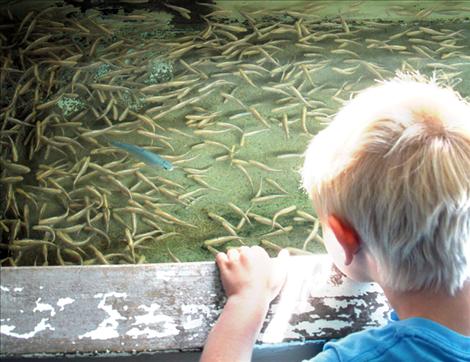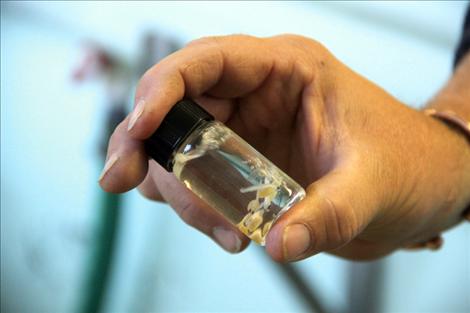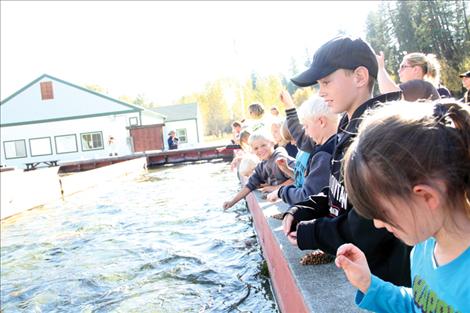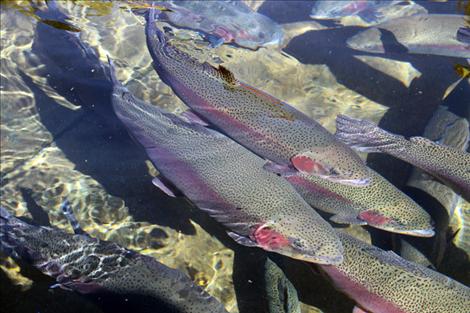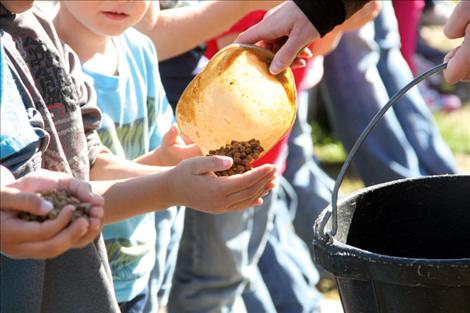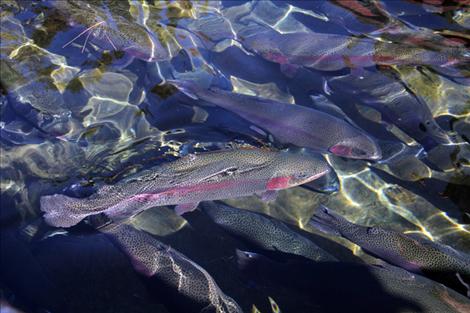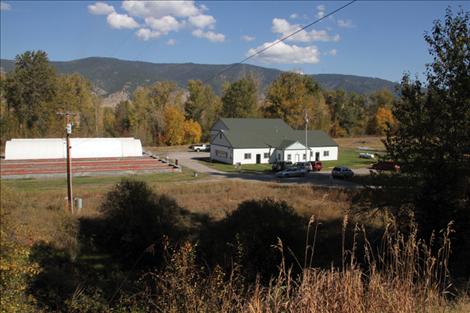Students tour busy Arlee fish hatchery
Hey savvy news reader! Thanks for choosing local.
You are now reading
1 of 3 free articles.
ARLEE – Not far from the meandering Jocko River in Arlee, millions of rainbow trout destined for various lakes, ponds and reservoirs throughout the United States find their start under the watchful care of a handful of people.
The Jocko River Trout Hatchery collects, fertilizes and ships 5-6 million rainbow trout eggs every year.
Fish Culture Specialist Jeff Lammerding recently explained the process and the various stages of fish development to a group of 25 Valley View School students who visited the facility on a field trip last Friday.
There are two kinds of fish hatcheries, he explained, brood and production. Brood hatcheries focus on the collection, fertilization and shipment of eggs while production facilities raise fish to a certain size and then plant them out. The Jocko Hatchery is both, but focuses primarily on its brood function. Employees maintain a brood stock of fish and harvest eggs from 4-year-old females.
The Arlee strain of rainbow trout is known for its ability to get big - fast, Lammerding explained. Some of the older fish tip the scales between 10-15 pounds. The largest female to ever spawn at the facility was 18.3 pounds. Depending on their size, fish are fed between 2 to 5 times daily with the younger fish being fed more frequently.
With the arrival of spawning season, the hatchery has just entered its busy time. Some 390 females will spawn during the next two and half months. According to Lammerding, a 4-year-old female rainbow will produce an average of 7,000 eggs during a season.
The hatchery’s three full time employees and one intern are busy spawning fish one week then picking and shipping previously collected and fertilized eggs the following week. The 2-week cycle will continue until about the end of December.
After combining milt from male fish and eggs from females, the fertilized eggs are incubated and carefully monitored. For the first 21 days the eggs are particularly sensitive to any changes in their environment. Even a slight bump to the barrel they’re kept in, could kill several eggs. The survival rate for fertilized fish eggs in a hatchery is roughly 76 out of 100, Lammerding said; in the wild it’s about 1 in 100.
Stephanie Espinoza, another fish culture specialist at the Jocko hatchery, explained that after 21 days, the fertilized eggs are ready to ship. Most of those eggs ship to other Montana production hatcheries with some ending up in other states. Many, she said, will be shipped to Utah as the state’s hatcheries are in a rebuilding phase after a bout of coldwater disease and invasive aquatic species wiped out their populations.
Once the Arlee Hatchery fish have spawned, they are planted the following spring in various lakes, ponds and reservoirs managed by the State of Montana. In order to keep sustainable population numbers within their facility, the Arlee Hatchery stocks all ages of fish – approximately 400,000 in all per year. Fish are stocked locally at the Ninepipe fishing pond.
As hatcheries are 100 percent funded through fishing license fees, the planting of fish is a direct benefit anglers see from license purchases.
In order to preserve the integrity of the native cutthroat species of trout, which are very similar genetically to rainbows, hatcheries no longer stock rivers and streams, Espinoza explained.
“We don’t want our rainbows hybridizing with cutthroat trout or outcompeting other native species of fish,” she said.
Staffed 24 hours a day, 365 days a year, Jocko River Fish Hatchery personnel keep tabs on fish, eggs and would-be predators - mainly birds but also the occasional, opportunistic otter.
In addition to their daily duties, staff members regularly give educational tours of the hatchery to visitors. Interested adults and children alike are welcome to arrange a visit. Just be sure to leave your fishing pole at home.















